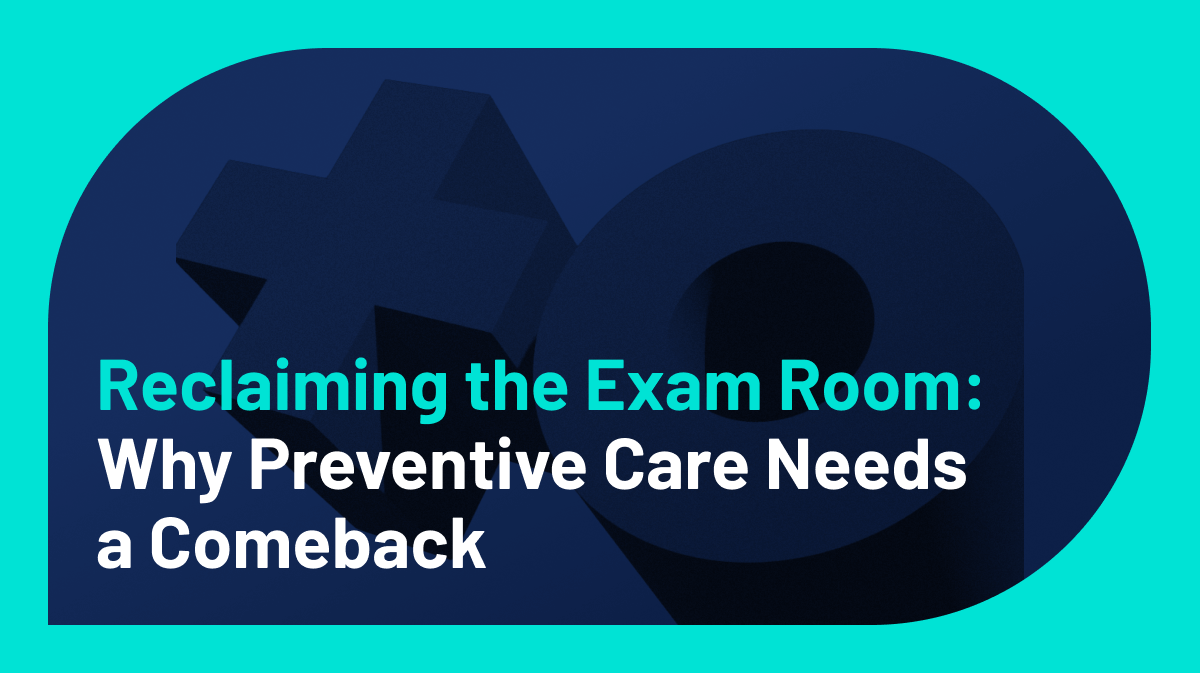
Reclaiming the Exam Room: Why Preventive Care Needs a Comeback
The Subtle Shift Happening Inside Every Exam Room
Something has changed in the rhythm of veterinary medicine. It’s not dramatic, but it’s noticeable. Conversations around prevention feel less routine. The wellness lab that used to be automatic gets skipped. The fecal test gets delayed. And before long, those small missed moments begin to add up.
The 2025 Veterinary Industry Benchmark Report from iVET360 uncovered what many practices are already sensing. Preventive care compliance is slipping, and it’s quietly reshaping revenue mix across the country.
The Numbers Behind the Trend
Across nearly 1,500 veterinary hospitals, our analysts found that overall visit volume fell by 4 percent in 2024, with the decline most visible in general exams. At the same time, revenue shifted toward lower-cost categories such as pharmacy, while compliance-driven services like labs and diagnostics showed stagnation or decline.
The data tells a clear story. Fecal exam ratios dropped month after month, while wellness labs hovered below historical averages. Dental compliance held relatively steady, but only because more practices offered promotions to keep those numbers up.
On paper, the revenue mix looks stable. In reality, it’s leaning on categories that don’t build long-term loyalty or preventive engagement.
What Compliance Really Means
When we talk about compliance, we’re not just talking about whether clients follow medical recommendations. We’re talking about how well the practice team follows through on its own standards of care.
At iVET360, we measure compliance by tracking how often key service codes are actually performed relative to the number of eligible exams. This approach goes beyond “did we recommend it?” and instead focuses on “did it happen?”
This type of data gives practice leaders a clear view of where gaps exist. It shows which doctors are consistently connecting with clients about prevention and which may need more support or training. More importantly, it gives teams direction instead of just data points.
The Cost of Disconnection
A decline in preventive care doesn’t just affect patient health—it changes the financial foundation of a hospital. Exams and diagnostics drive not only revenue but also client engagement. They bring clients back regularly and strengthen relationships built on trust.
When those visits drop, practices start to rely on rechecks and short-term appointments to fill the schedule. The 2025 report noted that recheck appointments were slightly up last year, which on the surface seems positive. But in reality, it reflects fewer new clients and less preventive activity.
A schedule full of rechecks means fewer opportunities to expand your active pet population. Over time, that can shrink your client base and weaken financial stability.
Why It’s Not About Client Interest
It’s easy to assume that declining compliance is due to clients saying no to recommendations. But our data suggests something different. Most clients still want to do the right thing for their pets—they just need a clear path to follow.
The issue lies in the communication gap. Busy teams, tight schedules, and rising costs make it harder to slow down and explain the “why” behind preventive services. When that conversation doesn’t happen, clients hesitate or delay.
The fix isn’t more promotion—it’s more connection. When staff have the time and confidence to explain the value of preventive care, compliance improves. When they don’t, even the best recommendations go unheard.
Bringing Value Back Into the Exam Room
The practices seeing success in 2025 are treating the exam room not as a transaction, but as a conversation. They’re training their teams to focus on education rather than sales. They’re using data to identify which services are underperforming and then building coaching plans to improve consistency.
It’s not about doing more—it’s about doing the right things with intention.
Start by reviewing your core compliance metrics. How often are wellness labs, fecal tests, and radiographs performed compared to the number of eligible exams? Use that baseline to create measurable goals, then follow up monthly.
Revisit how your team introduces these services to clients. A well-timed explanation about why a test matters is far more powerful than any discount.
The Bigger Picture
Preventive care isn’t broken, but it has drifted off course. The good news is that the solution is already within reach. Every team has the ability to rebuild consistency and bring purpose back to their appointments.
The practices that thrive in this environment will be the ones that slow down enough to reconnect with clients, explain the value behind each recommendation, and ensure every pet leaves with the care they truly need.
Because when compliance rises, so does trust, revenue, and long-term loyalty.







